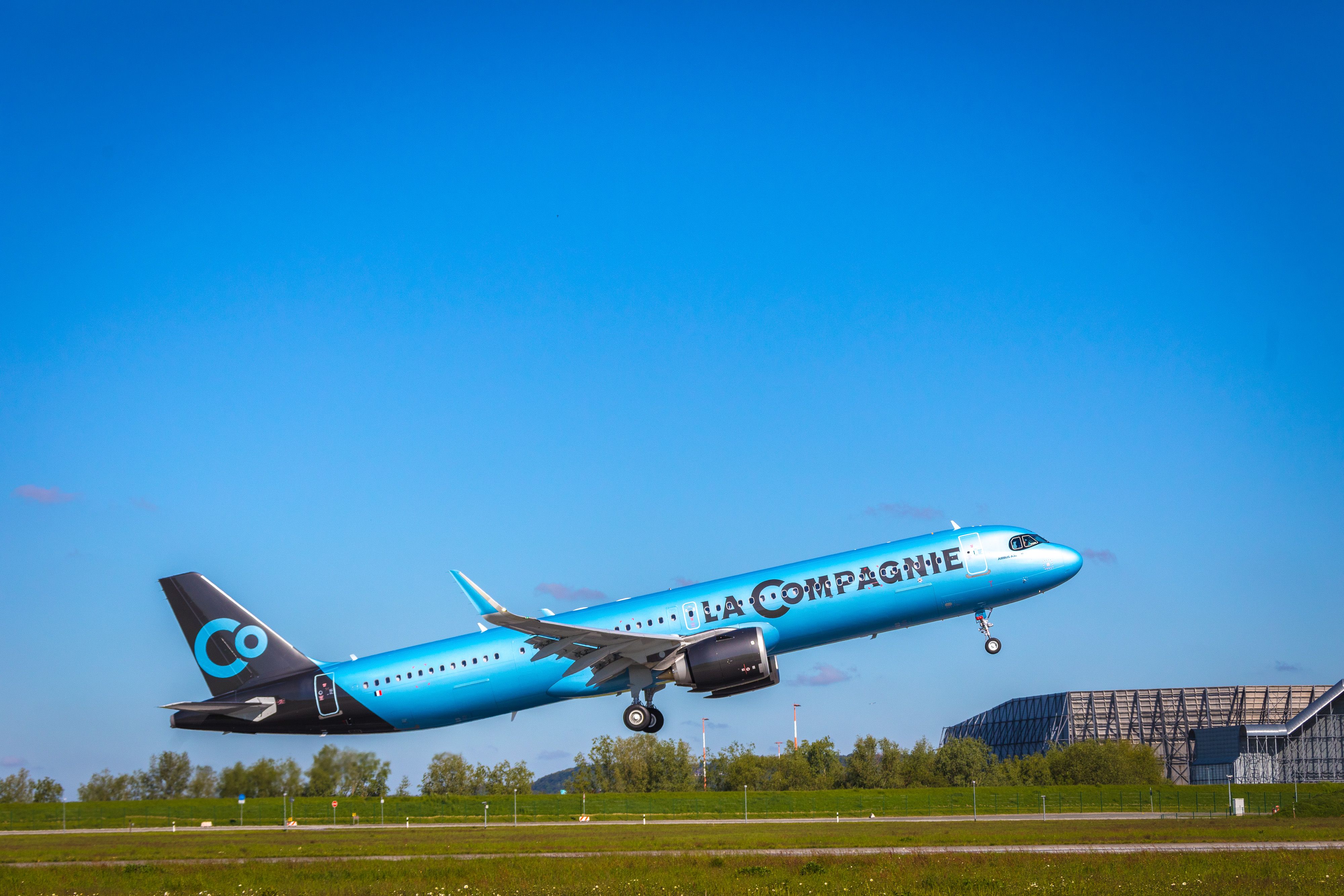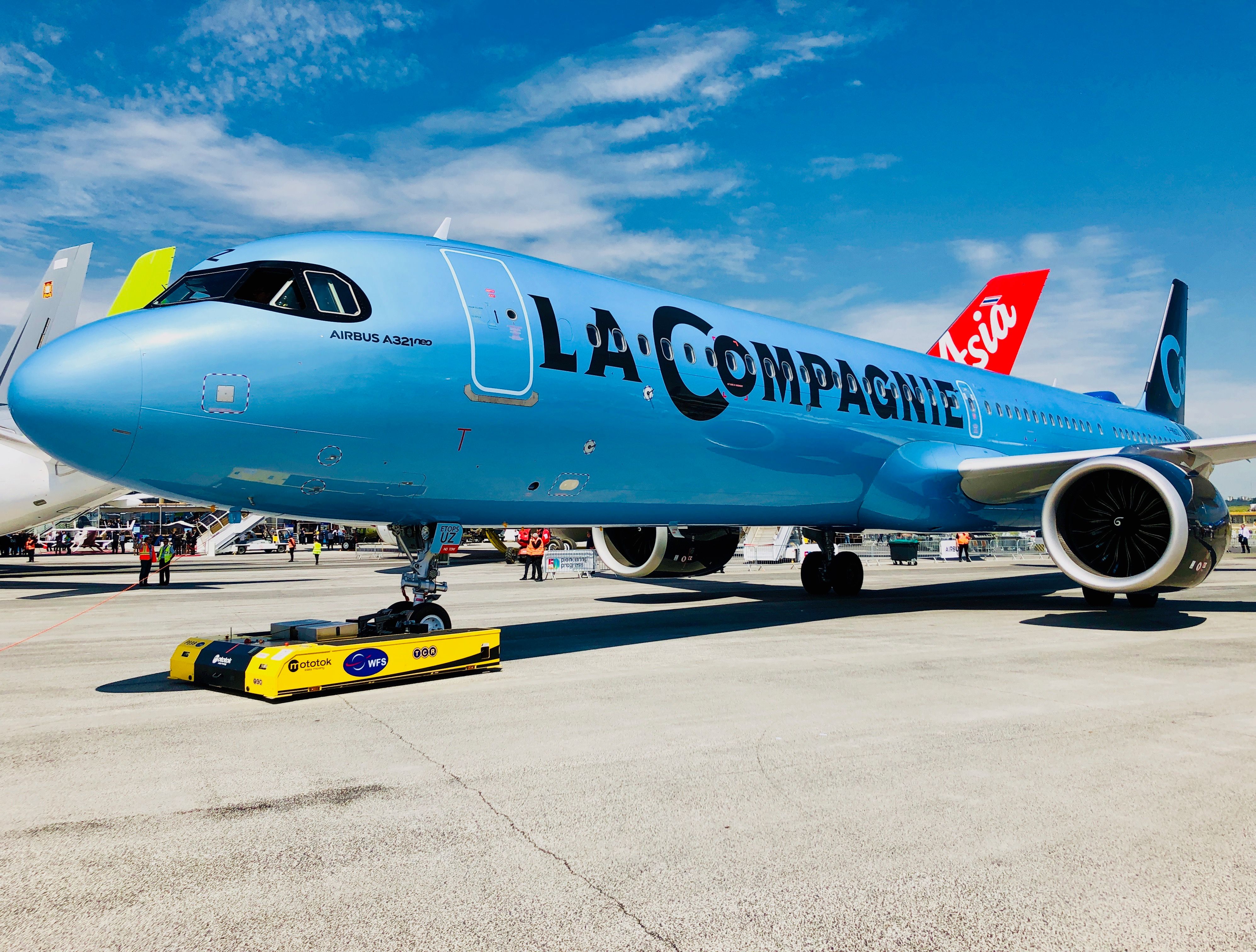Summary
- La Compagnie's success is attributed to several factors, including their switch to fuel-efficient narrowbody aircraft and their focus on catering to price-sensitive leisure passengers.
- The airline operates mainly between Paris-Orly and Newark Airport, targeting leisure travelers who prioritize cost over glamorous onboard offerings.
- La Compagnie's all-business model has limitations for growth and is only viable in select markets, but it appeals to leisure travelers seeking a more comfortable experience at a lower cost than full-service carriers.
La Compagnie, a French all-business airline, has a unique model that works well for them. There are several factors that have led to the success of La Compagnie's model. From switching its fleet to narrowbody aircraft with fuel efficiency in mind to a strong focus on leisure passengers, La Compagnie's model is unique but shows that such an airline can work.
The aircraft
In June 2019, La Compagnie took delivery of their first A321neo. Before flying the A321neo, La Compagnie only operated a Boeing 757 aircraft. The newer A321neo has allowed La Compagnie to achieve better fuel efficiency and passenger comfort. In October 2019, the airline retried its last 757 in favor of the new A321LR. This has allowed La Compagnie to save money in fuel and maintenance costs. Most costs that an airline faces are passed on to the customer, so by keeping costs down, La Compagnie can keep their prices competitive.
The market
La Compagnie mainly targets leisure travelers flying between the United States and France. Leisure travelers tend to be far more price sensitive than business travelers. However, La Compagnie has tailored their offerings specifically for this leisure market. Their prices are lower because they are not catering to traditional business class travelers. This means that, onboard, La Compagnie's offerings are not necessarily as glamorous as the likes of Lufthansa or United Airlines.
The airports
La Compagnie is based at Paris-Orly Airport and operates flights to Newark Liberty International Airport in the United States. Furthermore, the airline connects Newark with Milan Malpensa and Nice Côte d'Azur Airport. The airline also operates a seasonal service between Newark and Princess Juliana International Airport (SXM) in Simpson Bay, St. Maarten. Traditionally, business travelers tend to prefer Charles de Gaulle in Paris or JFK Airport in New York. This is because the airports will open up additional connection opportunities with airline partners. However, La Compagnie does not have any connecting partners as it focuses on point to point traffic.
With leisure passengers generally more amenable to landing a little further from their destination, La Compagnie was able to select the airports that best filled its needs in terms of schedule and slots.
Why so small?
So, La Compagnie offers all-business class flights between France, New York, and the Caribbean. These flights target leisure travelers and do not cost as much as flights with full-service carriers since La Compagnie can keep costs down. La Compagine's A321's are only fitted with 76 lie-flat seats in a 2-2 configuration. However, La Compagnie's model does not allow much room for growth.
There is healthy demand between these markets. Plenty of airlines operate multiple daily flights between Paris and New York. Furthermore, Nice does also have connections to the United States, albeit with seasonal service. But where does La Compagnie go next?
La Compagnie will never be able to grow to the size of Air France and British Airways because an all-business model will not work in every market. Looking at British Airways, they previously operated an A318 in an all-business configuration that between London's City Airport and New York- JFK, but the airline retired in February 2021.
La Compagnie and British Airways know that there are only select markets where their offerings as an all-business carrier will work. Though, La Compagnie offers business class at a lower cost, most leisure travelers will still prefer to fly a $500 roundtrip in economy than a $1,700 roundtrip in business.
Get the latest aviation news straight to your inbox: Sign up for our newsletters today.
Similar model
La Compagnie is not the first airline to operate an all-business class model. In 2008, International Airlines Group (IAG) launched Open Skies, a subsidiary of British Airways. Open Skies operated transatlantic service between New York and Paris using a Boeing 757-200 fleet and 767-300 aircraft in an all-business class configuration. However, ten years later, in 2018, IAG retired from the boutique airline in favor of a new low-cost brand, Level.
A few years earlier, MAXjet Airways, an all-business class airline, began operating transatlantic flights in 2003. MAXjet operated flights between London Stansted Airport and Harry Reid International Airport in Las Vegas, Los Angeles International Airport, and New York-JFK airport using a Boeing 767-200s fleet configured in an all-business class layout. However, just a few years later, in 2007, MAXjet declared Chapter 11 bankruptcy and ceased operations.
Overall
La Compagnie's model works for a number of reasons. First, they are small. This kind of model will only work on select routes and La Compagnie understands this. This is why they have not grown massively like other carriers who tried to shake up the market. Secondly, La Compagnie keeps costs down by tailoring their product to leisure travelers. This means they can spend less on the onboard product compared to full-service carriers. And, lastly, La Compagnie is able to improve their economics by flying more fuel-efficient aircraft.
But, at the end of the day, leisure travelers will likely enjoy their flight on La Compagnie over being crammed in coach. Ultimately, that is what La Compagnie is selling and that is how they have continued to be successful.
Have you flown with La Compagnie? Would you fly with La Compagnie? Let us know in the comments!


